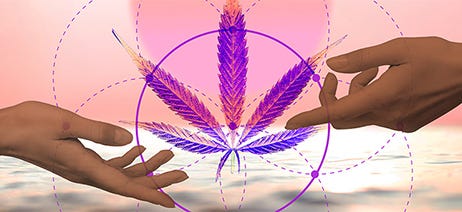
What is The Endocannabinoid System?
Reviewed by Debra Kimless, MD, Chief Medical Advisor for PharmaCann
You know you have a nervous system, immune system, and even a musculoskeletal system, but did you know you also have an endocannabinoid system? The endocannabinoid system (ECS) is a chemical-based biological system that governs just about every other biologic system in our bodies. Endocannabinoid receptors can be found in our brain, nerves, organs, immune cells, connective tissue, and more. And its overall goal? To keep our body in physiological balance.
“Think of your body as a vehicle driving down a bumpy road,” said Dr. Debra Kimless, a cannabis expert with board-certification in anesthesiologist, pain management, and lifestyle medicine. “As the driver, you are constantly making slight steering adjustments to ensure you stay on the intended path. That’s what the endocannabinoid system does–it regulates your body and keeps you on your path.”
According to Dr. Kimless, your body’s endocannabinoid system provides a negative feedback loop that modulates neurotransmitters. It pumps the brakes on the chemicals in the nervous system that can get overexcited, carefully modulating our immune and nervous systems.
How Does the Endocannabinoid System Work?
There are three main parts of the endocannabinoid system that work together to keep the body regulated:
- Endocannabinoids - on-demand chemicals created to “modulate” your body’s biological systems
- Endocannabinoid Receptors - where the endocannabinoids are received so they can interact with the rest of the body.
- Endocannabinoid Enzymes - chemicals that create the endocannabinoids when the body needs them and then break down the endocannabinoids when the body no longer needs them.
Endocannabinoids
Endocannabinoids, also known as endogenous cannabinoids, are lipid-based neurotransmitters that the body produces to help regulate different functions. (In fact, the word ‘endo’ is from the Latin word for ‘from within.’)
“Neurotransmitters are typically created and stored by the body until they are needed. What makes endocannabinoids so different from others is that they are only made when they’re needed, and they are only used locally where they are needed. Once they’ve served their purpose, they’re broken down and not stored,” says Dr. Kimless.
There are likely many endocannabinoids, but the two most studied are anandamide (AEA) and 2-arachidonoylglycerol (2-AG). While these molecules are still being studied, we do know that they’re a key part of keeping your internal systems running smoothly.
Endocannabinoid Receptors
“Think of endocannabinoid receptors as docking stations in which the endocannabinoids can be plugged into,” says Dr. Kimless. “These molecules modulate the needs of the body and internal biological systems.”
There are many endocannabinoid receptors being investigated, however the most studied and characterized are: the CB1 and CB2 receptors.
- CB1 Receptor - the most common receptor, found predominantly in the central and peripheral nerves.
- CB2 Receptor - typically located in immune cells (e.g. white cells), but also found throughout the body and the brain when a person is under physical or emotional stress.
Cannabinoid receptors are located throughout the body, and there are so many of them that scientists believe they are more numerous than any other receptor system.
Endocannabinoid Enzymes
Once the body no longer needs a specific endocannabinoid, endocannabinoid enzymes will break them down. There are currently two known enzymes that break down the endocannabinoids. Specifically: fatty acid amide hydrolase (FAAH) breaks down anandamide and monoacylglycerol lipase (MAGL) breaks down 2-AG.
How Does Cannabis Work with the Endocannabinoid System?
“The chemicals housed in the trichomes of the cannabis plant interact with our endocannabinoid system. That’s where the power of the cannabis plant resides,” notes Dr. Kimless. “This plant directly interacts with this biologic system that governs and maintains physiological balance within our bodies.”
Cannabis contains a variety of different phytochemicals, or chemicals found in the plant. There are cannabinoids, as well as terpenes and flavonoids that, when ingested, interact with and influence the endocannabinoid system, as well as other biological systems. These raw plant cannabinoids include THCA and CBDA, which, when heated, become THC and CBD. However, there are over a hundred cannabinoids in the plant that are bioactive in their own unique ways.
How Does THC Interact with the Endocannabinoid System?
“Tetrahydrocannabinol, or THC, is the cannabinoid that when consumed in a certain amount - and depending upon the user - can create an altered mental state,” notes Dr. Kimless. “THC binds to the endocannabinoid receptors, specifically CB1 and CB2, and creates a range of physiologic effects.”
How Does CBD Interact with the Endocannabinoid System?
“Cannabidiol, or CBD, doesn’t have the euphoric qualities of THC because it doesn’t work on the CB1 and CB2 receptors directly,” says Dr. Kimless. “It’s thought that CBD interacts with other receptors, including TRPV 1, PPAR, ion channels, and gaba receptor, which is the same receptor Valium targets.”
The endocannabinoid system was discovered less than 40 years ago, so there’s still so much to learn about it. What you do to help your body stay balanced is up to you—only you can know what your body needs.


About Debra Kimless, M.D.
Debra Kimless, M.D., is the Chief Medical Advisor for PharmaCann, overseeing the company’s medical cannabis program. As a board-certified anesthesiologist, pain medicine, and lifestyle medicine physician, she focuses on educating audiences about the benefits of cannabis. Dr. Kimless graduated magna cum laude, Phi Beta Kappa from Muhlenberg College, and earned her M.D. at Rutgers University. She then completed her anesthesiology residency at Temple University.


